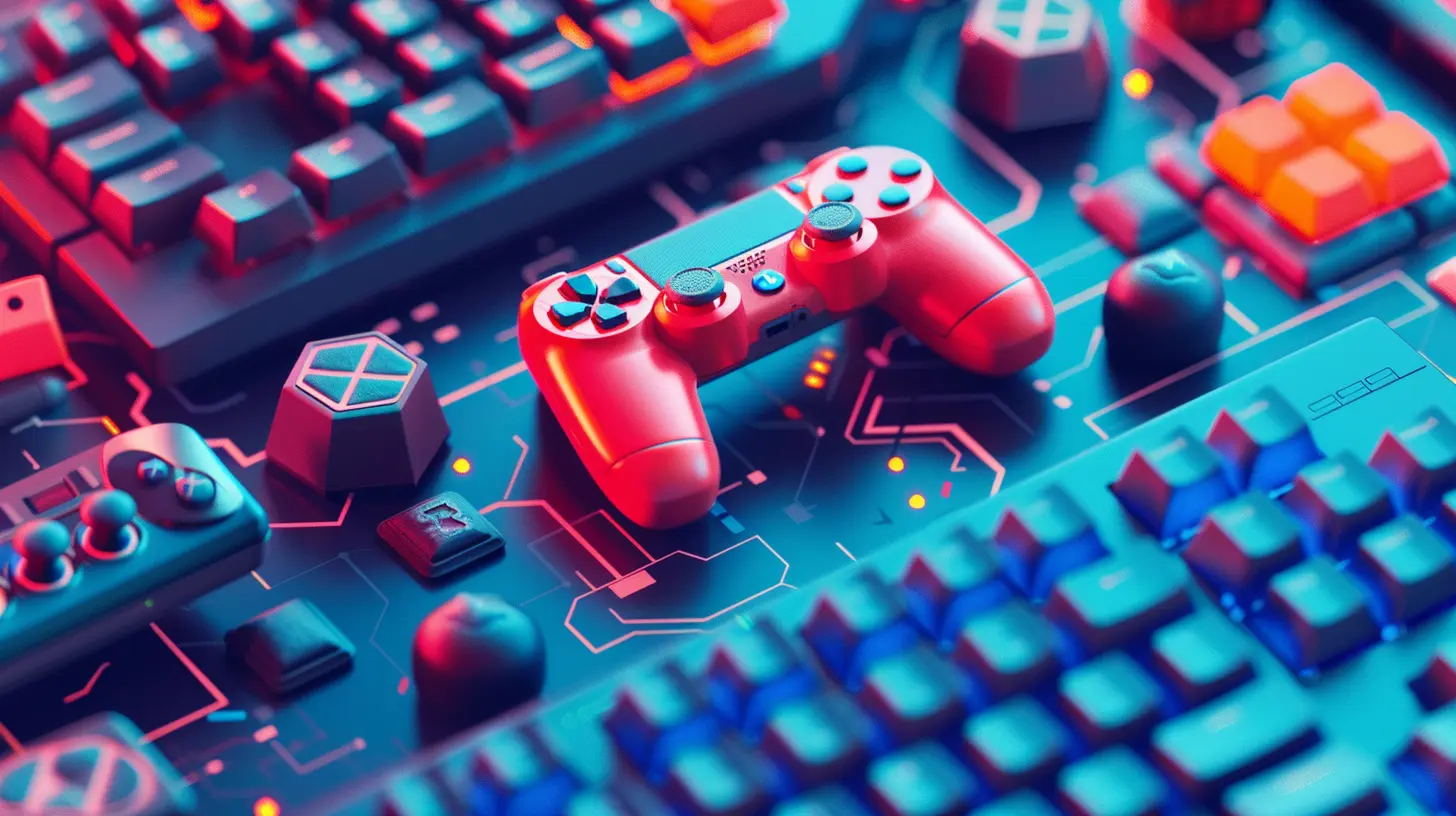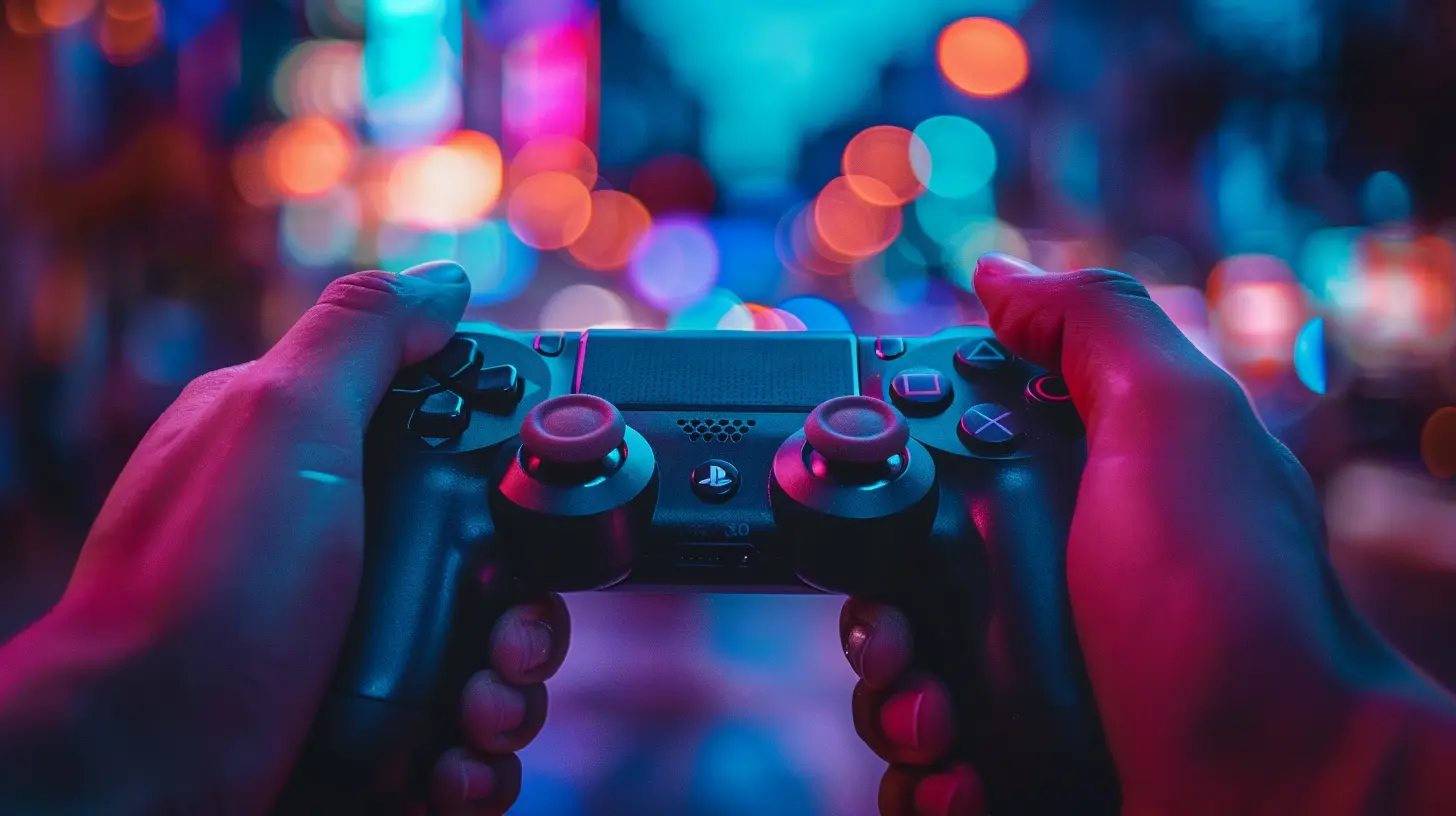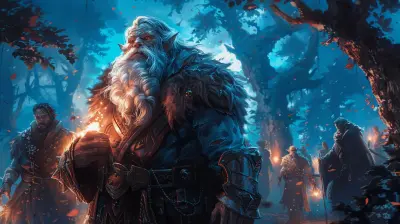How to Avoid Common Pitfalls in Game Design
8 June 2025
Game design is a wild ride—it’s this epic mash-up of creativity, logic, testing, and endless tweaking. Whether you're building your dream RPG, an indie puzzle game, or a frenetic multiplayer shooter, pitfalls are lurking around every corner, just waiting to trip you up. But don’t worry—we’re here to help you dodge those traps and keep your game development journey (mostly) smooth.
In this article, we’ll unpack the most common mistakes game designers make and share straightforward, real-world advice for how to steer clear of them. Ready? Let’s hit “Start”!
1. Skipping the Planning Phase
You wouldn’t build a house without a blueprint, right? Same goes for game design.Why It's a Big Deal
Some devs are so eager to get coding or crafting their first level that they skip the boring (but critical) planning phase. Without a plan, your game can spiral out of control—mechanics feel random, the story doesn’t gel, and deadlines become a fantasy.Solution: Design Docs Are Your Best Friend
Take the time to create a solid Game Design Document (GDD). This doesn’t have to be a 500-page novel, but it should include core gameplay mechanics, story outlines, art style direction, and technical requirements. Think of it as your game’s GPS—it’ll keep you from getting lost halfway through development.
2. Overcomplicating Mechanics
Ambition is great. But too many mechanics? Oof, that’s a problem.The Trap of "Feature Creep"
You start with a simple idea: a top-down dungeon crawler. Next thing you know, you’re adding base-building, time travel, crafting, stealth missions... and suddenly your game is a bloated mess. We call this "feature creep."Keep It Simple, Silly (KISS)
Nail the core gameplay loop before layering new stuff on top. Ask yourself: “Does this feature make my game more fun or just more work?” If it doesn’t add value, drop it. Players prefer games that do a few things well over ones that try to do everything.
3. Ignoring Player Feedback
Your game isn’t just yours—it’s for players. And their input is gold.Why Feedback Matters
You might think that your stealth mechanic is genius, but if players keep saying it’s clunky, you need to listen. Game testing isn’t just a box to tick—it’s a vital part of development.How to Get Good Feedback
Start testing early and often. Open up your game to friends, communities, even strangers on Reddit or Itch.io. Look for patterns in the feedback. If five people say your controls are confusing, don’t ignore them—it’s probably true.
4. Poor Onboarding and Tutorials
You only get one chance to make a first impression.Don't Assume Players Know Everything
You know how your stamina system works. New players? Not so much. If you toss them in without explaining the basics, they’ll bounce faster than a rubber ball.Make Learning Fun and Organic
Ditch the 10-minute wall of text. Instead, design tutorials that are integrated into gameplay. Show, don’t tell. Think of how Portal teaches you with simple puzzles—it’s genius, and your game can do the same.5. Inconsistent Art and Style
Imagine a gritty horror game with cartoonish fonts. Weird, right?The Visual Disconnect
Art style is more than just pretty pictures. It sets the tone, pulls players in, and supports your game’s identity. Mismatched visuals can confuse players and ruin immersion.Solution: Stay Cohesive
Pick a consistent art direction early on and stick to it. If you’re solo or on a small team, pick a style you can maintain throughout. Pixel art? Minimalist? Hand-drawn? All good—as long as it fits your game's vibe.6. Weak Game Progression
You’ve got killer mechanics, stunning art, and a fun core loop. But then… bam! The game gets repetitive.What Went Wrong?
A lot of devs forget to pace content and rewards. If every level feels the same, players lose interest. If it’s too hard too fast, they give up. Too easy? They get bored.Balancing Is Key
Design your progression curve thoughtfully. Introduce new elements gradually—enemies, items, environments—and make sure each level builds on the last. Use rewards (not just loot, but story, skills, etc.) to keep players motivated.7. Bad UI and UX
Amazing mechanics won’t save you if players can’t figure out how to start a mission.Clunky Interface = Frustrated Players
Menus that are hard to navigate, HUDs that clutter the screen, unclear icons—these drive players crazy. A bad user interface (UI) or user experience (UX) can kill your game even if everything else is golden.Design From the Player’s POV
Use intuitive layouts, readable fonts, and minimal clicks. Look at popular games in your genre. What do their interfaces look like? Learn from them. Also, watch others play your game—if they’re struggling to find the inventory, fix it.8. Forgetting About Sound Design
You’d be surprised how many devs treat sound like an afterthought.Silence Isn’t Always Golden
Sound tells players what’s happening—footsteps, danger, power-ups. It’s also emotional. A clever soundtrack can make a boss fight 10x more intense. Without good sound, your game feels empty.Don't Skimp on Audio
Invest time in good sound effects and music. There are tons of free (and paid) resources online, or you can collab with an indie composer. Even simple ambient sounds can level-up your game’s immersion.9. Lack of Polish
Ever play a game that just felt... rough? That’s usually a polish problem.What Does “Polish” Mean?
It’s those little things—juice in animations, smooth UI transitions, bug-free experiences. A game could be solid under the hood, but if it’s filled with bugs or janky animations, it won’t feel professional.Test and Refine
Squash bugs. Add visual effects. Smooth out the difficulty curve. Basically, don’t launch before it’s “done-done.” The last 10% of polish can make your game feel like a AAA experience—even if it’s made by just you.10. Not Thinking About Monetization Early
If your goal is to sell the game, don’t tack on monetization as an afterthought.Money Talk Matters
Whether you’re going premium, free-to-play, or doing in-app purchases—how you make money will affect your design. For example, F2P games often hinge on retention loops and microtransactions, which need to be designed upfront.Plan It From the Start
Decide on your business model early. And be ethical—nobody likes pay-to-win. Your monetization should feel fair and never hinder the fun.11. Trying to Do Everything Alone
Yes, you’re a superhero. But even superheroes need sidekicks.Solo Dev Burnout is Real
Trying to write the code, do the art, handle the marketing, and build a website? That’s a recipe for burnout and half-baked features.Collaboration Is Power
Join game dev Discords, forums, or local meetups. Consider outsourcing parts of the game you’re weaker at—sound, art, even writing. You’ll save time and your mental health in the process.12. Not Marketing the Game Until It’s Done
"If you build it, they will come." Nope. Not in the gaming world.Invisible Games Don’t Sell
No matter how great your game is, if people don’t hear about it, they won't play it. The biggest mistake indie devs make? Waiting until launch to start marketing.Build Hype Early
Start sharing your game on social media, forums, Reddit, and dev blogs from day one. Post updates, share art, run beta tests, and connect with your audience. Let players fall in love with your game long before it's even out.Final Thoughts
Game design is a bit like juggling flaming swords while riding a unicycle—it’s hard, but totally badass when you pull it off. Avoiding these common pitfalls won’t guarantee you an instant hit, but it will give your game a strong shot at success. Keep learning, keep testing, and most importantly—keep creating.Remember, every great game started with a rough draft, a couple of bugs, and a pile of lessons learned the hard way. You're not alone on this journey. Just stay sharp, stay flexible, and don’t be afraid to hit "Restart" when needed.
🎮 Now go make something awesome.
all images in this post were generated using AI tools
Category:
Game DesignAuthor:

Francesca West
Discussion
rate this article
3 comments
Layne Wood
Great insights on avoiding game design pitfalls! It's crucial to focus on player experience and iterative testing. Balancing creativity with player feedback can make all the difference. Looking forward to applying these strategies to enhance gameplay and create more engaging, memorable experiences for players. Keep up the good work!
June 13, 2025 at 4:04 AM

Francesca West
Thank you for your thoughtful comment! I'm glad you found the insights helpful and agree on the importance of balancing creativity with player feedback. Best of luck with your game design!
Rivenheart Jones
This article offers valuable insights into game design! I'm intrigued by the common pitfalls mentioned and eager to explore innovative strategies that can elevate our gaming experiences. Can't wait to dive deeper!
June 10, 2025 at 4:53 AM

Francesca West
Thank you! I'm glad you found the insights valuable. I hope you enjoy exploring the strategies to enhance your game design!
Onyx Shaffer
This article offers valuable insights into avoiding common game design pitfalls. By addressing key issues like player engagement and feedback, it provides practical guidance for both new and experienced designers alike.
June 9, 2025 at 4:29 PM

Francesca West
Thank you for your feedback! I'm glad you found the insights helpful for designers at all levels.



